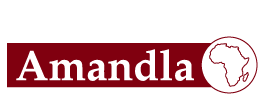Climate change threatens Morocco’s camels, and with them its cultural heritage
Camel livestock in Morocco is on the decline, due to the effects of climate change and diminishing pastures. Camels are part of the fabric of life for Saharan populations, providing meat, income, employment, and an essential draw for tourists. RFI met camel breeders in the Guelmim, the “gateway to the Sahara”.
The Amhayrich camel market, in the desert just outside the town of Guelmim in southern Morocco, is the largest and most popular in the country. “This market is known all over Morocco, people come from everywhere in the country to buy camels all year round,” said 33-year-old Mohammed.
He is a camel breeder, a job passed down from generation to generation. He told RFI’s correspondent that camels are essential to life in the desert. “Your camels are like your children. It is a cultural heritage. In our part of the Sahara, the best gift you can offer someone is a camel.”
Climate change
In the past 10 years, severe and more frequent droughts brought on by global warming have considerably reduced the vegetation available for grazing.
Mouloud, a 39-year-old breeder, said that the current conditions have contributed to reducing the camel livestock. “It’s worrying. Costs have exploded because of the droughts. We now need to buy fodder to feed the camels. The prices of camels shot up too, especially the stallions.
“The salary of herders takes a big chunk of costs. We pay them between €300 and €400 per month. We can’t even find herders in Morocco, we have to recruit them from Mauritania. They will work for a year or two, but the Moroccans will not stay more than two months,” he told RFI.
The vast, open grazing land camels have traditionally roamed is also shrinking, as it is used more and more for agriculture, with farming made possible thanks to the groundwater beneath the land’s surface.
Morocco’s camel husbandry is mainly for meat production. In 2023, it averaged four thousand tons while cattle meat production amounted to 257 thousand tons in 2022.
Replacing Kenya’s cattle
While Mohammed and Mouloud find camel breeding increasingly tough in Morocco, in northern Kenya recurrent drought is actually driving farmers to replacing their cattle with camels.
There, camels are viewed as a viable option when it comes to withstanding the effects of climate change. They can graze on dry grasses, go more than a week without water and produce up to six times more milk than cattle.
Samburu county officials launched a camel program in 2015 following several droughts, which killed off at least 70 percent of the cattle in Kenya’s arid and semi-arid regions.
As camels can be milked even during the dry season, they have helped to reduce malnutrition in northern Kenya. Kenya is now considered the leading camel milk producer in the world, producing around 1.165 million liters annually.
Kenya’s northern and southern pastoral counties are home to approximately 80 percent of the country’s camel population – roughly 4,722 million camels.
RFI


